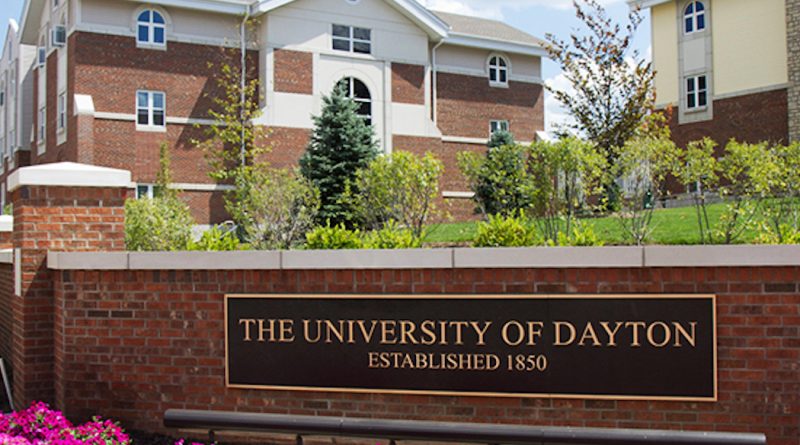How To Hate Hate: UD Hosts Teach-in About White Supremacy In Response To Hate-Based Incidents On Campus
Kaitlin Lewis
Contributing Writer
On March 19, UD students received an email from President Spina notifying that campus police had removed several posters hung around campus promoting a neo-Nazi group. This email was sent less than a month after Montgomery Country permitted the Honorable Sacred Knights, a white supremacist group, to hold a rally in downtown Dayton on May 25. White supremacist groups recently have been targeting college students for recruitment, and, as it can be seen, UD is not excluded.
The university has responded to these incidents in several ways. Dayton faculty and campus police urge anyone who is a part of the UD community to not engage with the rally in May since hate groups gain their platform based on the crowd and the publicity they draw. Also, there are safety concerns due to past rallies. But there are several other ways UD students can confront white supremacy.
On April 9, UD’s Human Rights Center hosted a teach-in on white supremacy and hate movements. Several professors and faculty members spoke about the history of some of the more well-known groups and their continuing influence in the U.S. There is a tendency to view these white supremacy groups as historical and without any social or political presence today. But studying white supremacy in the U.S. tells a different story about the real and powerful hate groups that have gained so much attention.
While there were several sessions as part of the teach-in on April 9, I only had a chance to attend the second one, titled “White Supremacy in Ohio, the Past and Present.” Dr. William Trollinger, director of the Core Integrate Studies program and a professor in the history and religious studies departments at UD, opened the discussion with a story about white supremacy in Dayton. In the 1920s, the Ku Klux Klan was making a comeback. Ohio was believed to be the number one state in the U.S. in terms of recruitment for the KKK. Dayton was the sixth-ranked city in the U.S. on the list of “hooded capitals:” cities with some of the highest percentage of eligible new members joining the KKK.
On Sept. 21, 1923, the KKK held a rally at the Montgomery County Fairgrounds, which is less than a mile from UD’s campus. More than 1,500 Klansmen initiated 7,000 new members as about 10,000 spectators watched giant burning crosses tall enough to be seen from UD’s campus. To put that into perspective, there are 8,499 undergraduate students at UD today.
The second wave of the Klan’s power dismantled by the end of the 1920s. However, 32 states passed legislation that allowed for involuntary sterilization laws in order to control undesirable populations, such as African-Americans. 33 states passed laws that criminalized interracial marriage. And the National Origins Act of 1924 stated that 85 percent of all immigrants from Europe had to come from northern and western Europe – the white, Protestant part.
As Trollinger said, “With the small group coming in May, it is easy to overlook their wins. Part of my message today is that the Klan has done a lot of winning in America.”
Dr. Arthur Jipson, a professor of sociology at UD, brought Dr. Trollinger’s history lesson into a modern perspective. In the U.S. today, formal meetings of white supremacy groups have replaced their historical violence. There are roughly 100 different groups across the country that make up what would be traditionally known as the KKK. Within the last year, propaganda for these organizations has jumped by 182 percent. And within the state of Ohio, there are more than 30 white supremacy organizations made up of at least 100 active members. And two of these organizations have made headlines on UD’s campus just during this semester.
So what can students do? How do we hate hate? The university will continue to offer events on campus for ways students can respond to white supremacy groups. A campus dialogue to address how to further dismantle white supremacy will be held on April 16.
Jipson urged that he does not want students to make it a “one and done” deal; attending one teach-in is not enough. To end the long tradition of white supremacy that has been woven into American history, students must constantly be proactive in addressing and dismantling these hate groups.
Professor Cecilia Moore, a professor in religious studies, also spoke at the session I was able to attend. Focusing on how Catholics have responded to racism in the past, she gave some of the best advice I think all students who are sickened by white supremacy need to hear:
“We are prejudiced because we are not educated. The more we live, the more we begin to understand that beauty and truth are not the monopoly of any age, any culture, or any race.”
So UD students, what are you going to do with your education? How are you going to hate hate?

